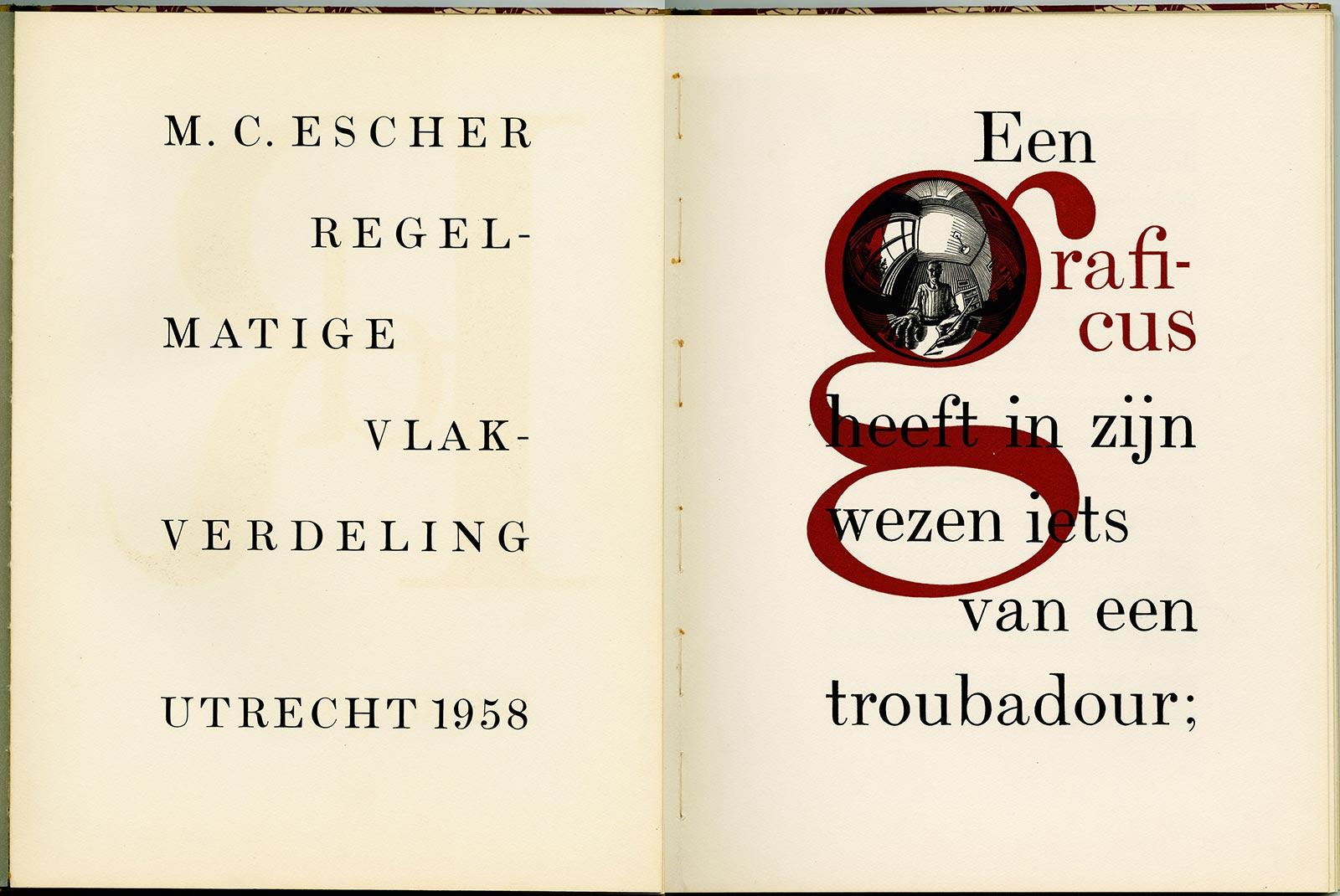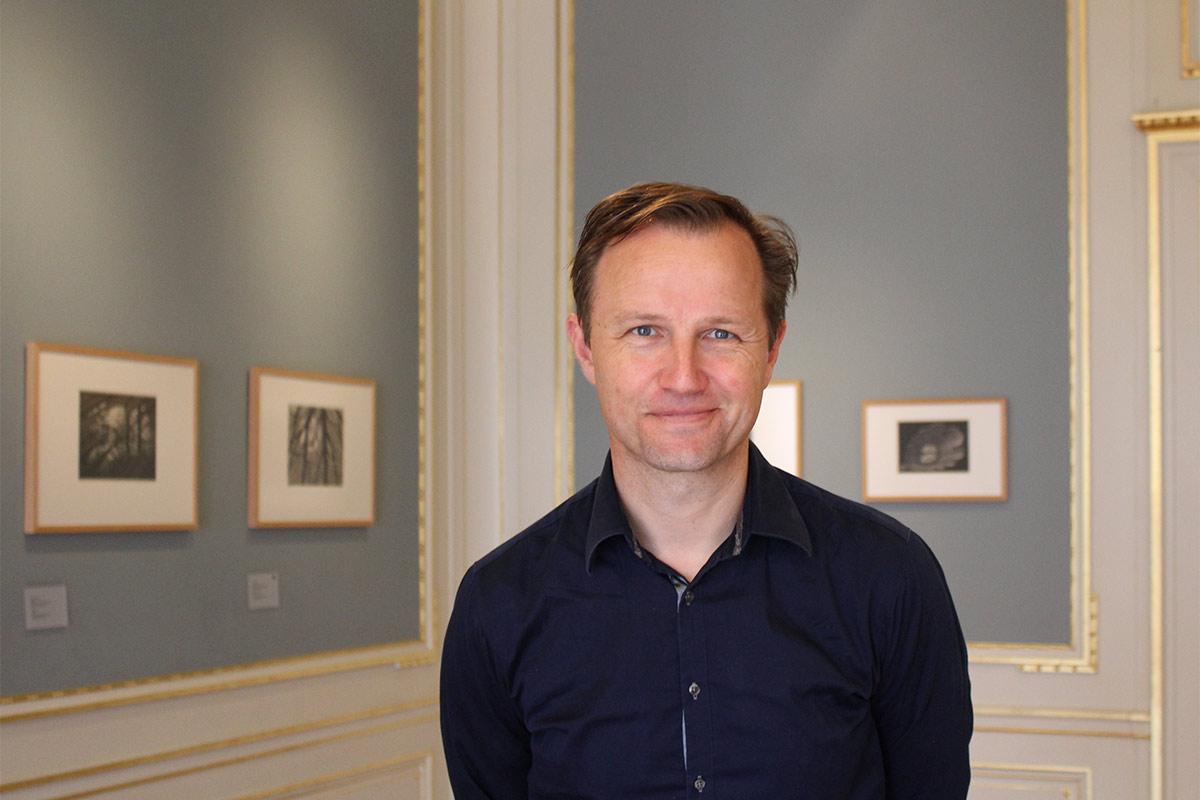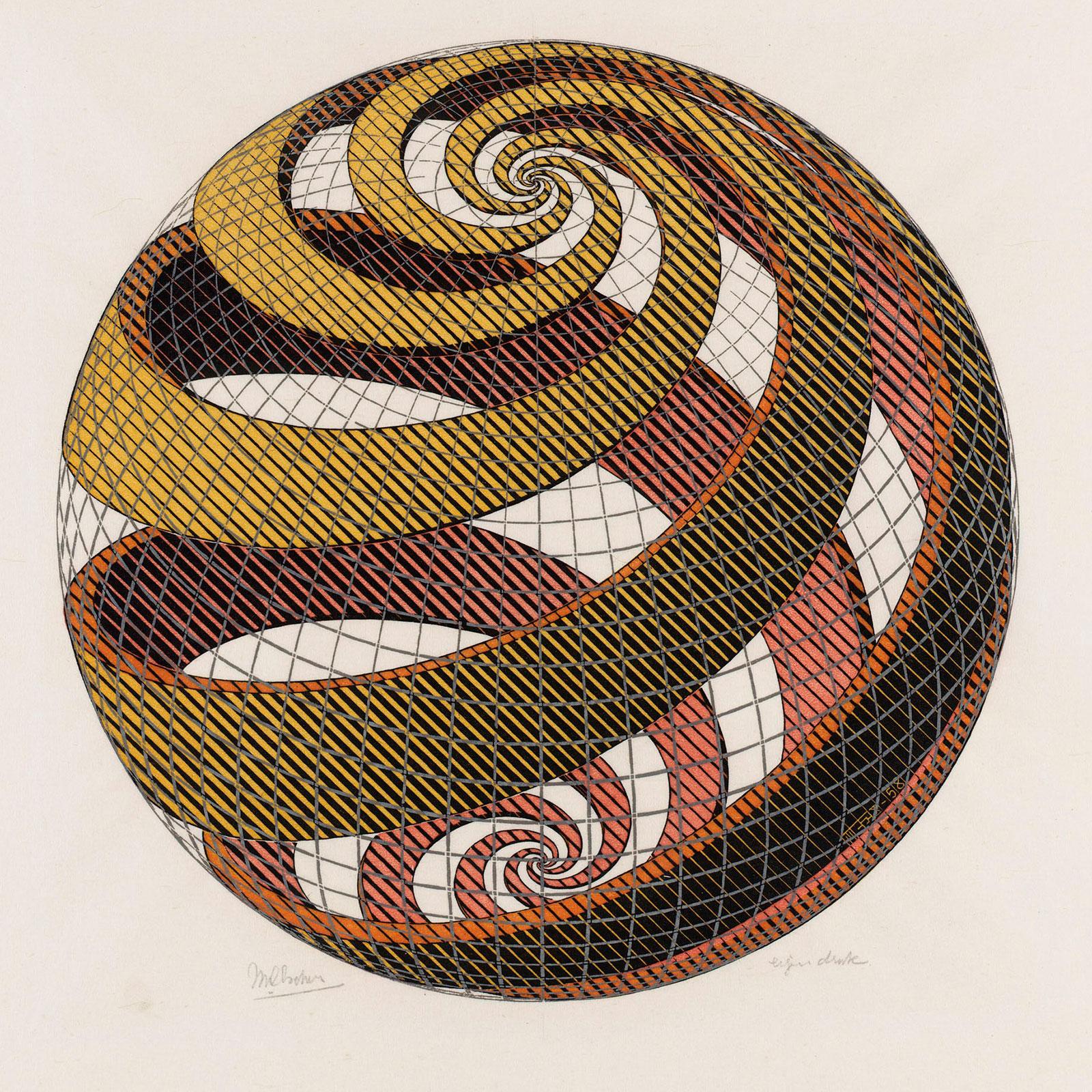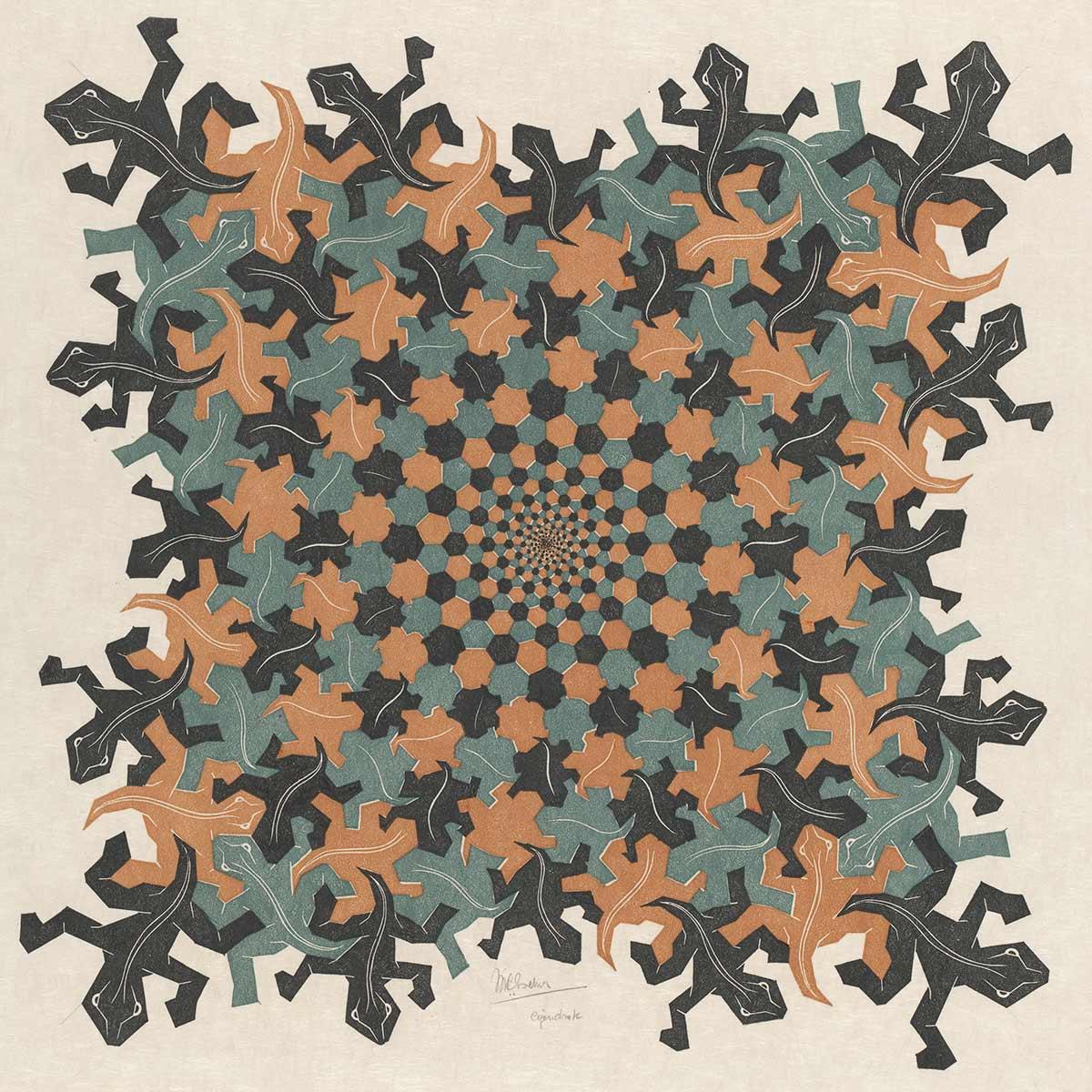

Cornelius Van Schaack Roosevelt was born on 23 October 1915. He was a man with many hobbies, though his greatest love was the work of M.C. Escher. From the moment he set eyes on some Escher prints in 1954 he was captivated and would go on to become an obsessive collector of everything that had anything to do with the graphic artist: prints, reproductions, letters, books, newspaper articles, and all kinds of Escher products. But the two also became personal friends, and Roosevelt became a confidant that Escher would often rely on.
Cornelius Van Schaack Roosevelt (1915-1991) was born in New York, the grandson of former American president Theodore Roosevelt (1858-1919). He was a student at Harvard and graduated from the Massachusetts Institute of Technology in 1938. He spent a few years as a mining engineer, served in the Navy during WWII, and spent many years with the U.S. foreign intelligence service, the CIA. He combined this professional background with a great love of archaeology and art. He was already a collector of Japanese netsukes (hand-carved button-like toggles worn with kimonos) when he visited the highly successful Escher exhibition at the Whyte Gallery in Washington (organised by Charles Alldredge) in 1954. Roosevelt was immediately sold. He started collecting Escher prints and from 1957 the two also corresponded with each other. In his first letter he asks the graphic artist if he can buy some prints. Escher refers him to Alldredge who later confirms that Roosevelt did indeed visit and made purchases*. Escher and Roosevelt met on two occasions. The first of these was on 28 October 1960 at a lecture the graphic artist gave at the MIT in Boston, the institute from which Roosevelt had graduated many years earlier. Escher later invited Roosevelt to his home in Baarn on 9 June 1968. The collector was in the Netherlands for the retrospective exhibition in The Hague. At the start of 1962, Roosevelt brought his love for netsuke and Escher together when he asked the graphic artist to make a design for a sphere, which he wanted a Japanese ivory netsuke cutter to create. Escher initially wanted to do this carving himself, but he felt that he no longer had the energy and time to do so. He drew his design on a plastic ball, as an example for the netsuke cutter**. In addition to his direct contact with Escher, Roosevelt also corresponded with numerous universities, institutes, museums and private individuals at home and abroad on the work of the Dutch graphic artist. He became a great promoter of and advisor to Escher in the United States, a role that Charles Alldredge also held until his death in 1963. Roosevelt's collection would grow to more than 200 original prints. He also collected everything he could find in newspaper articles, posters, book illustrations and other publications about the graphic artist. He hired translators to render Dutch texts by Escher in English, including those from the book The Regular Distribution of the Plane***. In 1974 he donated his entire collection, including his extensive correspondence with Escher (reportedly more than 300 letters), to the National Gallery of Art in Washington. Escher asked Roosevelt to act on his behalf when it came to handling requests from publishers in the United States who wanted to use his prints in books and magazines. Roosevelt was the right person for the job. He simply invited people who wanted to publish a print to his home in Washington, D.C., to view his collection. Escher wrote about such a visit in a letter to his son George, on 30 January 1966****:
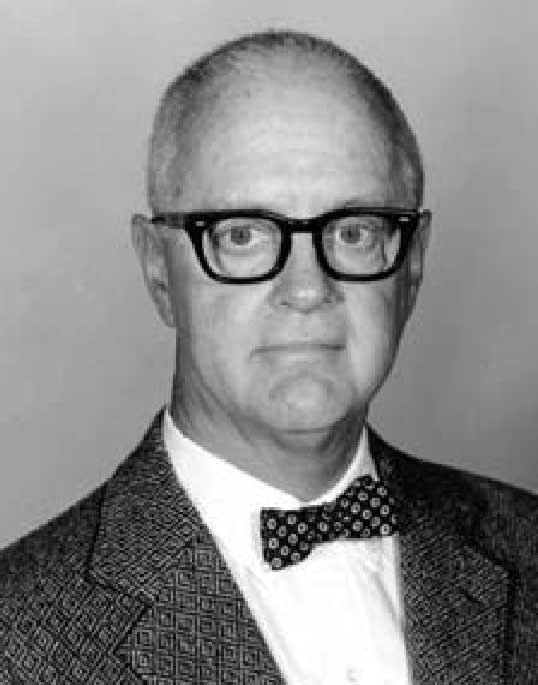
‘Yesterday, I spent a large part of the day answering a letter from Martin Gardner who intends to devote one of his Scientific American columns to me this spring. I find it a commendable intention not to be despised, and I had to write him a detailed letter, for the fellow is ever so friendly. He’s going to choose the necessary illustrations at Cornelius Roosevelt’s in Washington. R. has about eighty of my prints and is always immediately prepared to loan them to anyone who wants them.’
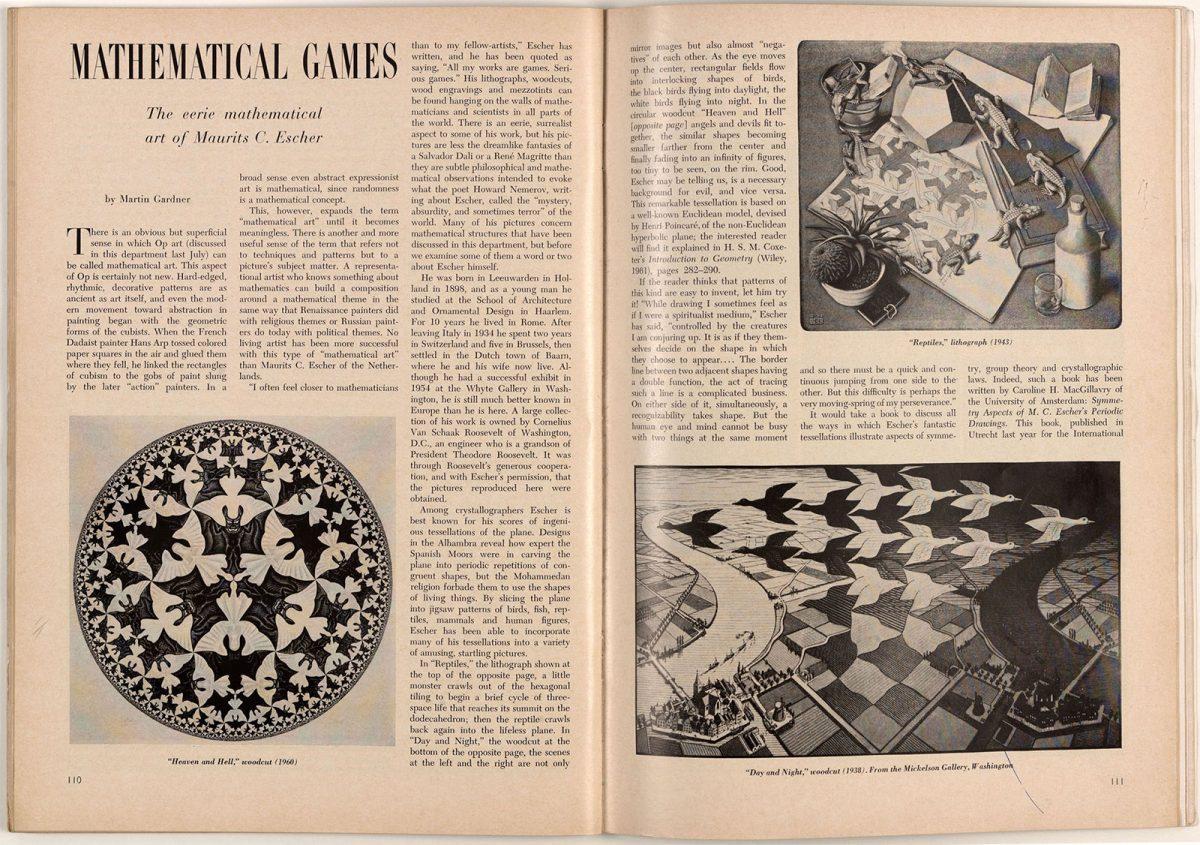
Gardner's column would create even more demand for Escher from the United States, both for the prints themselves and their reproductions. An interest that had already been sparked enormously on the back of previous articles in Time and Life, the exhibition in the Whyte Gallery and Escher's lectures at the congress of crystallographers and at the MIT. The requests that Roosevelt received by letter have all been preserved and are now available in the library of the National Gallery of Art.
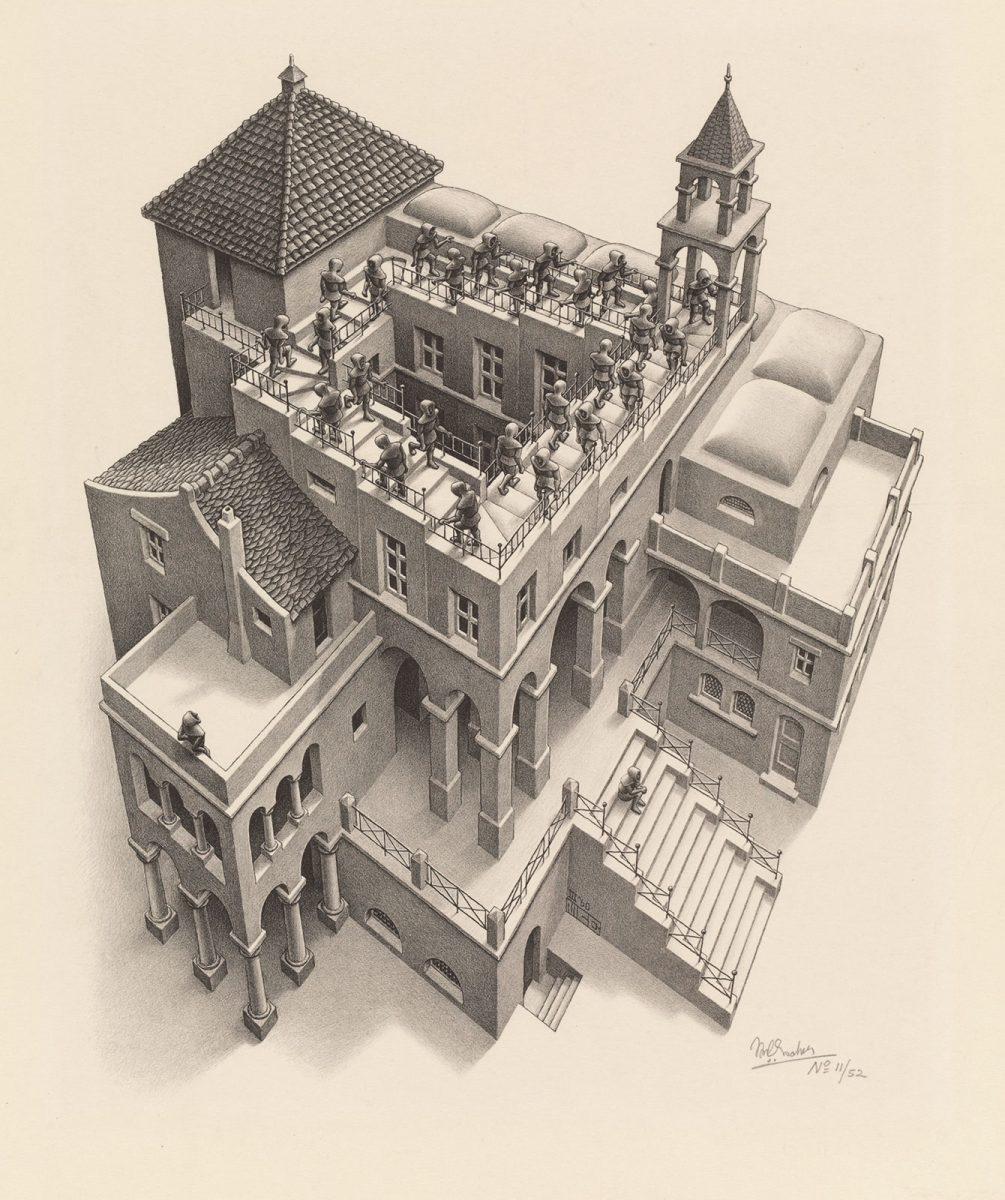
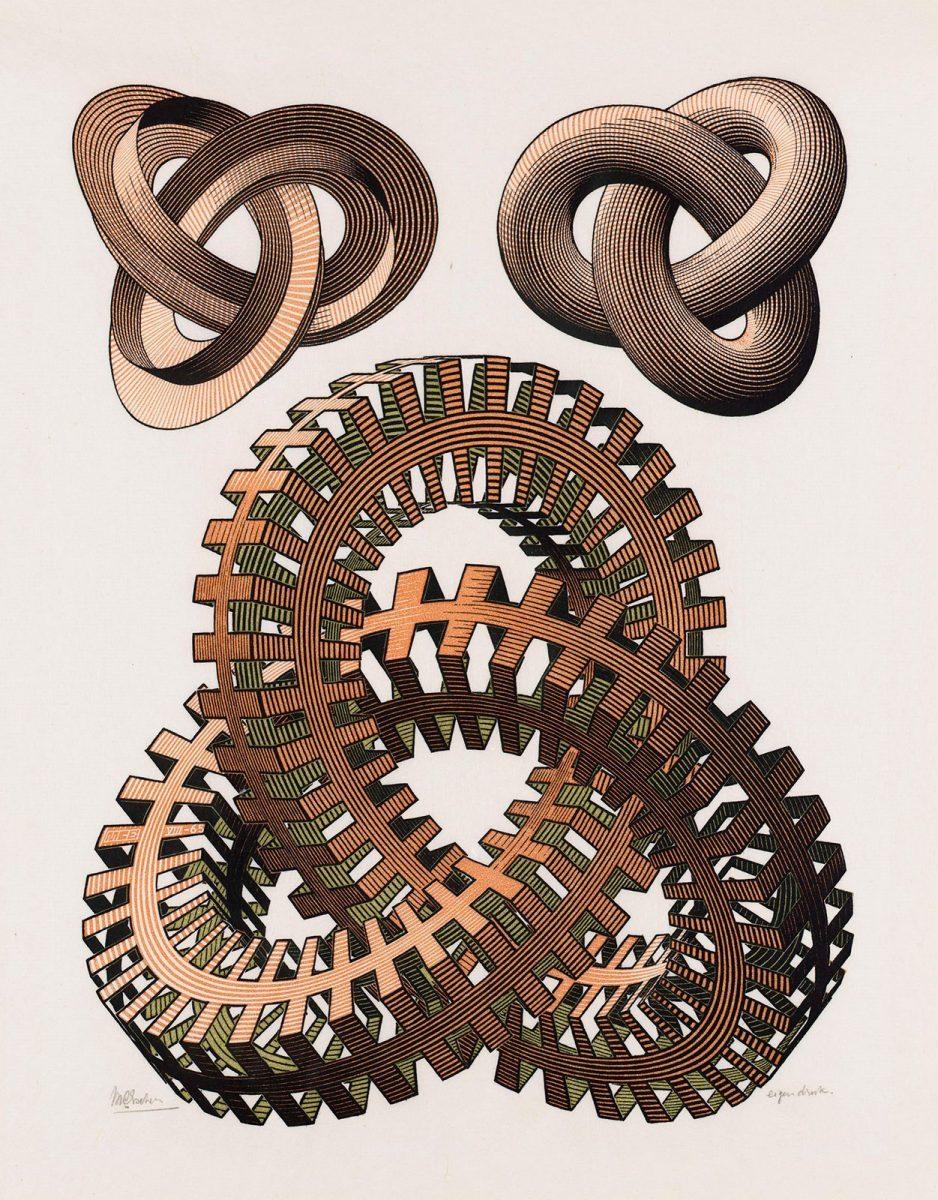
An example of the role that Roosevelt would fulfil is a letter he wrote to Escher on 7 March 1964. In it, he said the printmaker would receive a letter from the Pratt Graphic Art Center in New York asking for permission to publish eight or ten prints. Roosevelt strongly advised Escher to grant this: the Pratt was highly regarded in graphic and education circles. On 21 April 1969, he asked Escher whether he had ever thought of having his tessellations used as a design by a fabric manufacturer. Roosevelt may be an art lover, but he was also sympathetic to the possibility of its commercial use, as shown by his collection, which, in addition to original prints, also contained Escher reproductions in various forms of use. The fact that Escher had a special relationship with Roosevelt is evident from a letter dated 6 May 1966, in which he says that he has stopped selling prints to individual American customers. From now on they could go to the Schuster and Michelson galleries. But he made an exception for Roosevelt.*****.
Escher also often put ideas for prints to Roosevelt. In November 1961, for example, he sketched an impossible triangle in his letter, the basis for his new print Waterfall. He added that he got the idea for it from this shape, which he had received from father Lionel and son Roger Penrose. A few months later, Escher wrote about the visit Roger and his wife had paid him and how their conversation was so lively that it caused the couple to miss their return flight to England. He was moved by the playfulness of the scientists he had met and wrote that he felt more at ease with them than with his own colleagues. The two would continue to write to each other until shortly before Escher's death in 1972.
In the catalogue for an Escher exhibition in 1987, Roosevelt wrote about Escher******:
'Regardless of what the world thought of him, Escher imperturbably always went his own way. He reminds us of a modern alchemist ingeniously and fanatically experimenting with his magic balls and mirrors, animals and books, his magic spells and magic concepts. A wonderfully obstinate figure, now artist, now thinker, philosopher, and shaman, Escher insisted, “All my works are games, serious games".'
By that time, Roosevelt had stopped actively mediating in requests to publish Escher prints. The interest was so great and the copyright situation so complex that it was impossible for him to keep up. He handed over his role to the M.C. Escher Foundation, which was founded in 1968. In the meantime, he was still busy with the transfer of his collection to the NGA. This was a process he had started in 1974, but it was not until 1984 that he transferred the last works, books and other types of material******. When he died in 1991, obituaries appeared in several American newspapers, but the fact that Roosevelt was such a great Escher collector and that he contributed a lot to the popularity of Escher was neglected. That image has now been restored and Roosevelt's role is fully recognised. And his legacy, housed at the National Gallery of Art in the form of the 'Cornelius Van S. Roosevelt Collection', is huge.
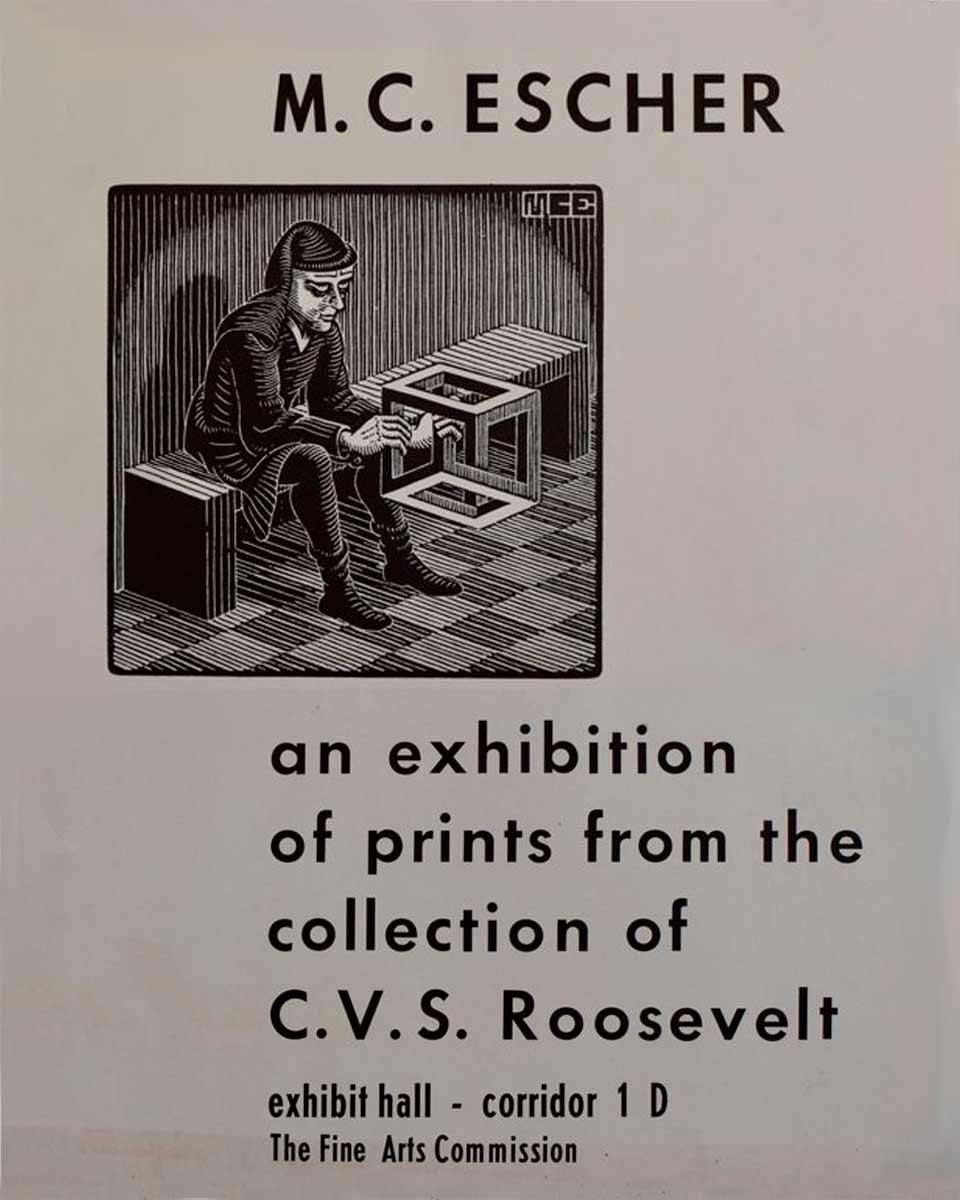
Source
[*] M.C. Escher, His Life and Complete Graphic Work, edited by J.L. Locher, Abradale Press, 1982, page 88
[**] Visions of Symmetry: notebooks, periodic drawings, and related work of M.C. Escher, Doris Schattschneider, W.H. Freeman and Company, 1990, page 246
[***] M.C. Escher, His Life and Complete Graphic Work, edited by J.L. Locher, Abradale Press, 1982, page 121
[****] M.C. Escher, His Life and Complete Graphic Work, edited by J.L. Locher, Abradale Press, 1982, page 126
[*****] and [******] M.C. Escher’s Legacy A Centennial Celebration, editors: Michele Emmer and Doris Schattschneider, 2003, page 55-56
[*******] 'Cornelius Roosevelt completed the donation of his extraordinary Escher collection with a gift of 103 prints, 5 illustrated books, and 22 volumes of original and documentary material on the artist', Annual Report National Gallery of Art, 1984, page 88
'The library received publications from 65 individual donors during the year. Cornelius Van S. Roosevelt donated 135 books and exhibition catalogues, 35 loose leaf binders of correspondence and ephemera, and 8 filmstrips, all relating to the life and work of M.C. Escher.' Annual Report National Gallery of Art, 1984, page 99
More Escher today

